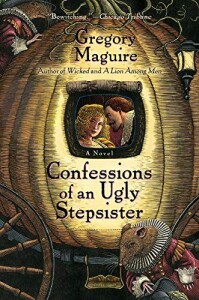 Laurie Thayer contributed this review.
Laurie Thayer contributed this review.
When Iris Fisher’s English father is suddenly murdered by his neighbors, Iris’s Dutch mother Margarethe gathers up her daughters (Iris has an elder sister, Ruth) and flees back to her homeland. She hopes to take sanctuary with her father, but arrives to find that her father has died some time ago. Penniless, the trio is taken in by the Master, a painter, who agrees to house and feed them if Iris will sit for a portrait.
One of the first people that Iris notices in her new home is a child of her own age, the ethereally lovely Clara van den Meer, whom the citizens of Haarlem call a changeling. Iris has no idea that her life is going to be inextricably bound up with this beautiful child.
Eventually, Margarethe’s manipulations land her and her daughters in the van den Meer household. Iris is to be an English tutor and companion to Clara while Margarethe becomes cook and cleaner. While Iris is enjoying having a new friend and exploring her new world, Margarethe’s manipulations continue, until after Dame van den Meer’s death in childbirth, she becomes the new Dame van den Meer. And still her manipulations continue.
Confessions of an Ugly Stepsister is, of course, a variation on the age-old tale of Cinderella, the fair young maid whose evil stepmother and stepsisters keep her in the kitchen and keep her covered in dirt and ashes so that her beauty is hidden. But here, the stepsisters are not evil. Nor is Iris truly ugly. She is plain to look upon, certainly, but she has a kind and loving heart and sticks up for Clara against her mother. Ruth, the elder sister, also is not evil; she cannot be, for she has no more wit than a 5 year old and must be taken care of by Iris. This version is much closer to the recently released screen version of the tale Ever After starring Drew Barrymore as Cinderella (if you’ll recall, one of the stepsisters was considered ugly by her mother and was much more sympathetic to Cinderella’s plight) than the Disney version where the sisters were both ugly and spiteful.
Maguire has set the story against the backdrop of seventeenth-century Holland; Rembrandt is mentioned as being a young fellow using surprising techniques. Much of the detail is told in painterly metaphor, light and color, especially when Iris herself becomes interested in painting.
The story does have all of the time-honored motifs of the tale, including Cinderella visiting the ball and being unrecognized, the lost slipper, the visit of the Prince to the household, but it is how they are mixed up and changed that makes the story fresh and new, and although we know that Cinderella will end up with the Prince, what happens after that is something of a surprise.
I have not read Maguire’s first novel, Wicked: The Life and Times of the Wicked Witch of the West, but having read Confessions of an Ugly Stepsister, I have moved it to the top of my reading list. I am also anxiously awaiting his next novel.
(ReganBooks, 1999)
